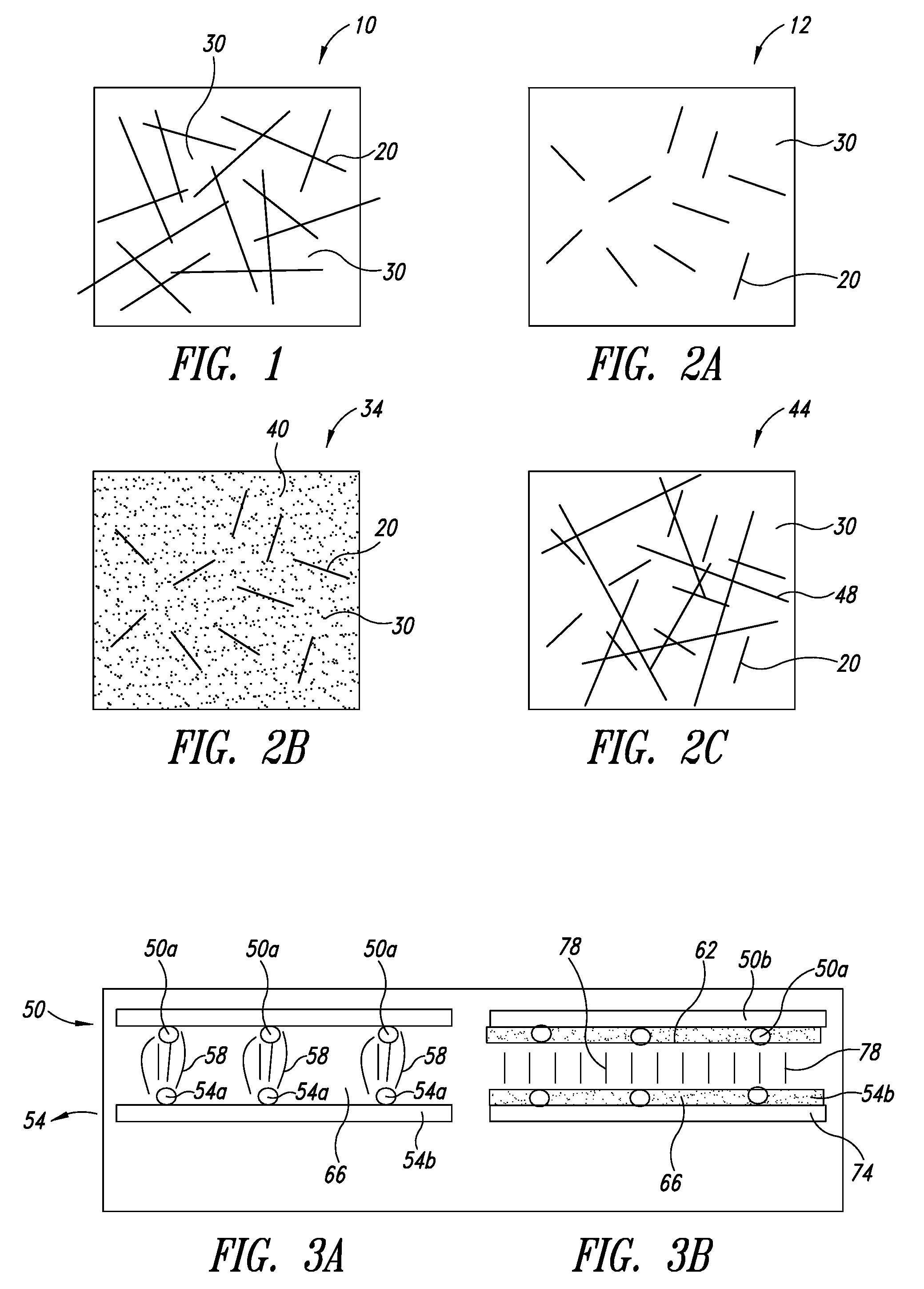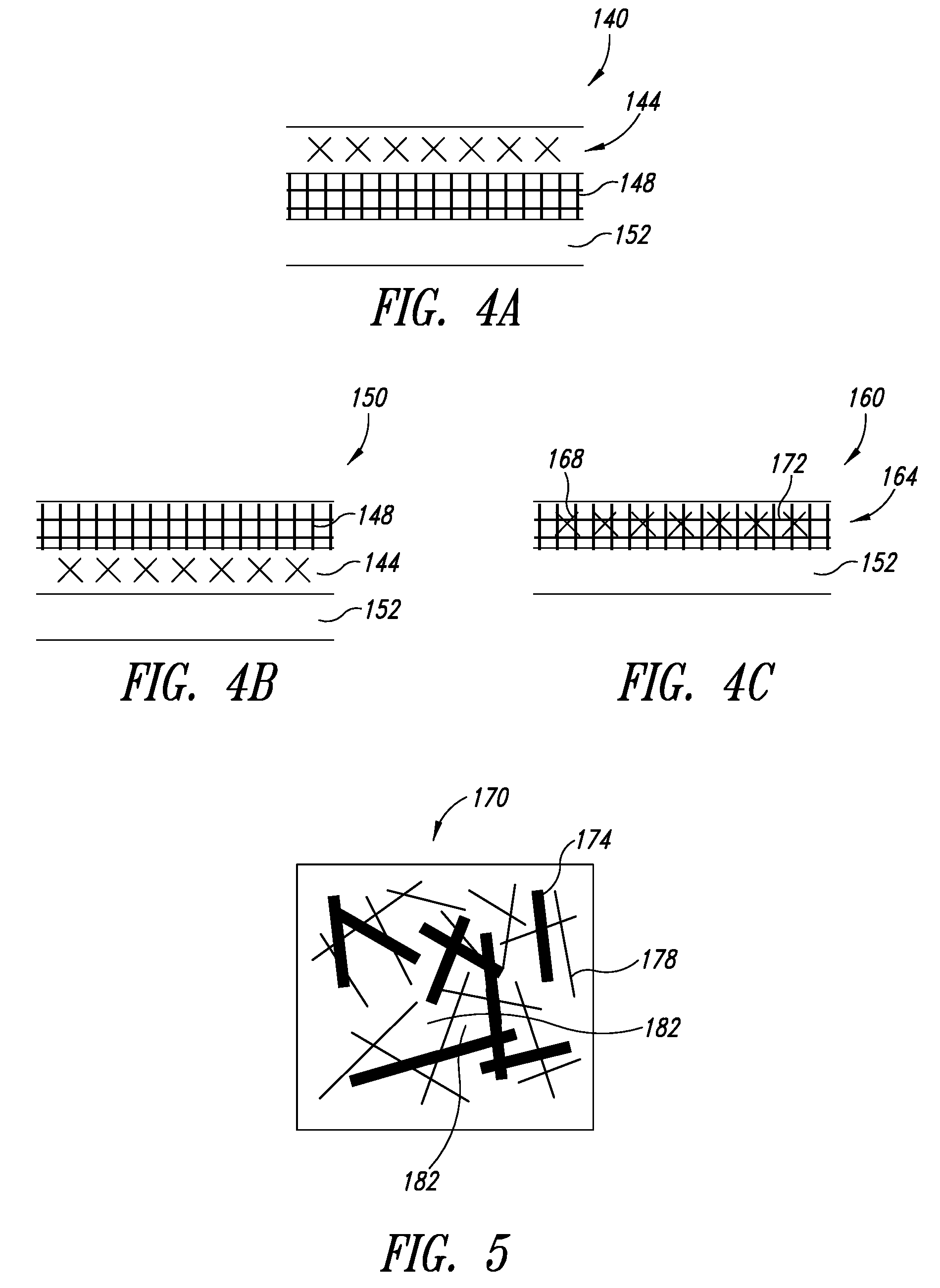Composite transparent conductors and methods of forming the same
a conductor and transparent technology, applied in the field of transparent conductors, can solve the problems of high cost of metal oxide film fabrication, and high optical absorption, and achieve the effect of improving drawing legibility
- Summary
- Abstract
- Description
- Claims
- Application Information
AI Technical Summary
Benefits of technology
Problems solved by technology
Method used
Image
Examples
example 1
Synthesis of Silver Nanowires
[0130]Silver nanowires were synthesized by a reduction of silver nitrate dissolved in ethylene glycol in the presence of poly(vinyl pyrrolidone) (PVP). The method was described in, e.g. Y. Sun, B. Gates, B. Mayers, & Y. Xia, “Crystalline silver nanowires by soft solution processing”, Nanolett, (2002), 2(2) 165-168. Uniform silver nanowires can be selectively isolated by centrifugation or other known methods.
[0131]Alternatively, uniform silver nanowires can be synthesized directly by the addition of a suitable ionic additive (e.g., tetrabutylammonium chloride) to the above reaction mixture. The silver nanowires thus produced can be used directly without a separate step of size-selection. This synthesis is described in more detail in U.S. Provisional Application No. 60 / 815,627, in the name of Cambrios Technologies Corporation, the assignee of the present application, which application is incorporated herein in it entirety.
[0132]In the following examples, ...
example 2
Preparation of Composite Transparent Conductors
[0133]The metal nanowires can be formulated into an ink composition prior to deposition on a substrate or a continuous conductive film such as ITO film, and conductive polymer films.
[0134]An ITO film can be directly sputtered on a substrate followed by the deposition of the nanowire layer. Alternatively, a nanowire layer can be first deposited on a substrate, followed by sputtering an ITO film directly on the nanowire layer.
[0135]If the secondary conductive medium includes carbon nanotubes, the carbon nanotubes can be formulated into the same ink composition with the metal nanowires for co-deposition. Alternatively, the carbon nanotubes can be formulated into a separate ink composition for serial deposition before or after the deposition of the metal nanowires.
[0136]Typically, the ink composition comprises agents that facilitate dispersion of the nanostructures and / or immobilization of the nanostructures on the substrates. These agents...
example 3
Evaluation of Optical and Electrical Properties of Transparent Conductors
[0146]The composite transparent conductors prepared according to the methods described herein were evaluated to establish their optical and electrical properties.
[0147]The light transmission data were obtained according to the methodology in ASTM D1003. Haze was measured using a BYK Gardner Haze-gard Plus. The surface resistivity was measured using a Fluke 175 True RMS Multimeter or contactless resistance meter, Delcom model 717B conductance monitor. A more typical device is a 4 point probe system for measuring resistance (e.g., by Keithley Instruments).
[0148]The interconnectivity of the nanowires and an areal coverage of the substrate can also be observed under an optical or scanning electron microscope.
PUM
 Login to View More
Login to View More Abstract
Description
Claims
Application Information
 Login to View More
Login to View More - R&D
- Intellectual Property
- Life Sciences
- Materials
- Tech Scout
- Unparalleled Data Quality
- Higher Quality Content
- 60% Fewer Hallucinations
Browse by: Latest US Patents, China's latest patents, Technical Efficacy Thesaurus, Application Domain, Technology Topic, Popular Technical Reports.
© 2025 PatSnap. All rights reserved.Legal|Privacy policy|Modern Slavery Act Transparency Statement|Sitemap|About US| Contact US: help@patsnap.com



